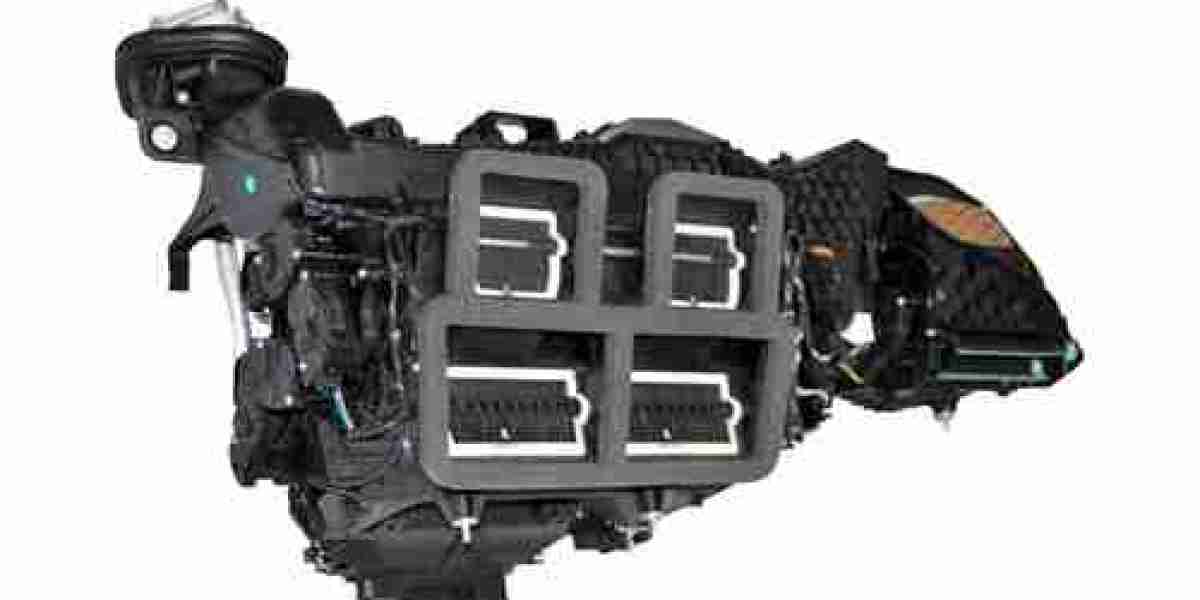The automotive HVAC market developments over recent years highlight a sector undergoing significant transformation, fueled by technological innovation, changing regulatory landscapes, and evolving consumer expectations. Heating, ventilation, and air conditioning (HVAC) systems in vehicles have become essential not just for comfort but also for energy efficiency, safety, and sustainability. This article examines the major developments shaping the automotive HVAC market, including innovations, emerging technologies, market drivers, and challenges.
Technological Innovations Driving the Market
One of the most notable developments in the automotive HVAC market is the increasing adoption of advanced technologies that improve system efficiency and passenger comfort. Traditional HVAC systems primarily relied on engine heat for cabin warming and basic cooling mechanisms. However, recent innovations have introduced intelligent climate control systems that automatically adjust temperature, airflow, and humidity levels based on real-time cabin conditions.
Smart sensors and microcontrollers now enable HVAC systems to monitor and respond to multiple parameters such as passenger presence, outside temperature, humidity, and air quality. This automation optimizes energy consumption and enhances comfort, marking a shift from manual control to fully automated climate management.
The rise of electric vehicles (EVs) is another major catalyst for HVAC market developments. Since EVs lack a conventional engine that produces waste heat, manufacturers have had to innovate new heating solutions. Heat pump technology, which transfers heat efficiently rather than generating it, has become increasingly common in EV HVAC systems. This innovation helps preserve battery life by reducing power consumption while maintaining effective cabin heating.
Integration of Air Purification and Health Safety Features
In response to rising consumer health awareness—exacerbated by the global COVID-19 pandemic—automakers are incorporating advanced air purification technologies within HVAC systems. Developments include the integration of high-efficiency particulate air (HEPA) filters, activated carbon filters, and ultraviolet (UV) light sterilization to improve cabin air quality by eliminating allergens, pollutants, and microbes.
These health-focused HVAC enhancements address growing concerns about airborne contaminants in enclosed spaces and have become a selling point for consumers seeking safer travel environments. The inclusion of such technologies reflects a broader industry trend toward holistic in-cabin wellness.
Environmental Regulations and Sustainable HVAC Solutions
Environmental regulations are significantly influencing automotive HVAC market developments. Governments worldwide are tightening restrictions on the use of refrigerants with high global warming potential (GWP). This regulatory push is driving the transition from conventional refrigerants such as R-134a to more environmentally friendly alternatives like R-1234yf.
Alongside refrigerant changes, manufacturers are innovating to reduce HVAC systems’ energy consumption, which directly impacts vehicle fuel efficiency and emissions. Lightweight materials, compact designs, and more efficient compressors and fans are being developed to meet these goals. Additionally, automakers focus on integrating HVAC systems with overall vehicle thermal management to optimize energy use further.
Consumer-Centric Features and Connectivity
Modern consumers expect their vehicles to offer not just functionality but also convenience and personalization. The automotive HVAC market has responded with developments that enable greater control and customization. Multi-zone climate control systems allow passengers to set individual temperature preferences for different parts of the vehicle, enhancing comfort on long journeys.
Moreover, integration with vehicle infotainment systems and smartphone apps has become common. This connectivity allows drivers and passengers to remotely pre-condition their vehicle’s interior temperature before entering, monitor air quality, and adjust settings via mobile devices. Such connected HVAC solutions enhance user experience and align with broader trends toward smart, connected vehicles.
Market Expansion Driven by Electrification and Urbanization
The global push toward electric vehicles is one of the most significant growth drivers influencing HVAC market developments. As EV adoption accelerates, the demand for innovative HVAC solutions tailored to electric powertrains continues to rise. EV-specific HVAC systems are designed not only for cabin comfort but also to maintain optimal battery temperature, which is crucial for performance and longevity.
Urbanization trends also contribute to market growth. As more people live in cities with extreme weather conditions and pollution, the demand for effective HVAC systems in vehicles rises. Consumers in urban areas increasingly seek vehicles with advanced climate control and air purification features to improve comfort and health during daily commutes.
Challenges and Industry Responses
Despite these positive developments, the automotive HVAC market faces challenges. The cost of integrating advanced technologies such as heat pumps, UV sterilizers, and connected controls can be high, potentially affecting vehicle affordability. Manufacturers are balancing innovation with cost-effectiveness to ensure wider market adoption.
Supply chain disruptions, particularly during the COVID-19 pandemic, have also impacted component availability, delaying production timelines. Companies are investing in diversified sourcing and localized manufacturing to mitigate such risks.
Furthermore, meeting diverse global environmental regulations requires constant product adaptation and innovation, which can strain R&D resources, especially for smaller suppliers.
Future Outlook and Emerging Trends
Looking ahead, the automotive HVAC market is expected to continue its trajectory of rapid innovation and growth. Artificial intelligence (AI) and machine learning are poised to play a larger role in predictive climate control, adjusting HVAC settings based on passenger habits, weather forecasts, and energy optimization needs.
The shift toward autonomous vehicles will likely spur new HVAC developments focused on occupant comfort and wellness, as passengers transition from drivers to riders with different in-cabin expectations.
Sustainability will remain a central theme, with ongoing research into alternative refrigerants, recyclable materials, and energy-efficient HVAC designs. Modular and scalable HVAC systems tailored for various vehicle types, including commercial and off-road vehicles, represent additional growth opportunities.
Conclusion
The automotive HVAC market developments demonstrate a sector evolving rapidly under the influence of technological innovation, environmental pressures, and changing consumer demands. From heat pump integration and air purification enhancements to connected climate controls and eco-friendly refrigerants, these developments are transforming HVAC systems into sophisticated, energy-efficient components critical to vehicle performance and passenger comfort.
As the automotive industry embraces electrification, connectivity, and sustainability, HVAC systems will continue to innovate, playing a pivotal role in the future of mobility. Stakeholders that stay abreast of these developments and invest in advanced solutions are well-positioned to capitalize on the expanding opportunities in this dynamic market.



